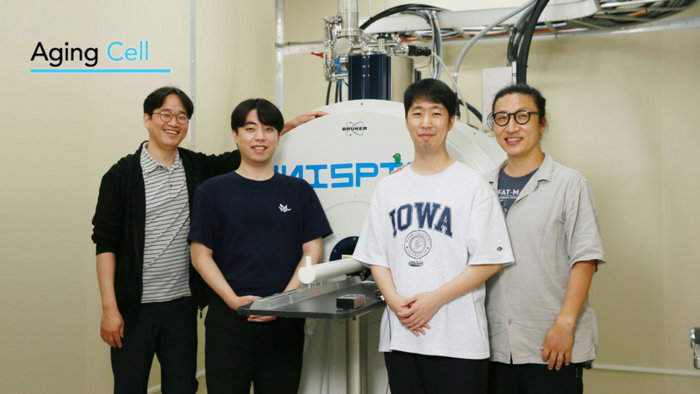Iron (Fe) accumulates in the brain cortex with aging. A plethora of studies indicate that progressive iron accumulation in the substantia nigra (SN) in the aged human brain is a major risk factor for Parkinson’s disease (PD) and other neurodegenerative diseases, but not everyone. This is because our body has plans to respond specifically to iron overloading.

Credit: UNIST
Iron (Fe) accumulates in the brain cortex with aging. A plethora of studies indicate that progressive iron accumulation in the substantia nigra (SN) in the aged human brain is a major risk factor for Parkinson’s disease (PD) and other neurodegenerative diseases, but not everyone. This is because our body has plans to respond specifically to iron overloading.
A recent study, jointly led by Professor Taejoon Kwon and Professor Hyung Joon Cho in the Department of Biomedical Engineering at UNIST details the neuronal response to excessive iron accumulation, which is associated with age-related neurodegenerative diseases.
By investigating the response of neurons in the SN against age-related iron accumulation, the research team identified a transcriptome profile of aging-related iron accumulation using rats of different ages and confirmed their iron accumulation using the magnetic resonance images. With the additional animal experiments and cell line experiments, they found that two genes (CLU and HERPUD1) responded to age-related iron accumulation, and the knockdown of these genes severely impaired the cellular tolerance for iron toxicity.
“We conjecture that the understanding of the gene expression landscape during age-related iron accumulation can help us to elucidate molecular pathways and putative preventative strategies against neurodegenerative diseases,” noted the research team.
Their findings have been published in the September 2022 issue of Aging Cell, an open-access journal published by John Wiley & Sons. This study has been supported by the Global Ph.D. Fellowship and the University Key Research Institute (UKRI) programs through the National Research Foundation of Korea (NRF). It has also been supported through the grants by the Korea Health Industry Development Institute (KHIDI) and UNIST.
Journal Reference
Kujin Kwon,Hwapyeong Cho,Soyeon Lee, et al., “Adaptive cellular response of the substantia nigra dopaminergic neurons upon age-dependent iron accumulation,” Aging Cell, (2022).
Journal
Aging Cell
Article Publication Date
13-Dec-2022




